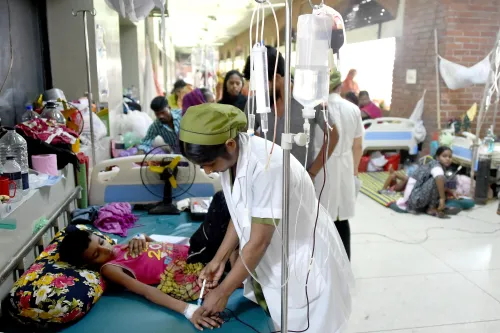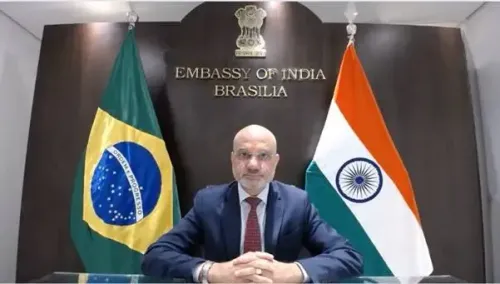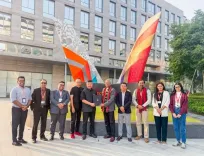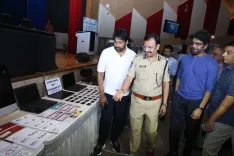Is India’s MedTech Sector Really Set to Reach $50 Billion by 2030?
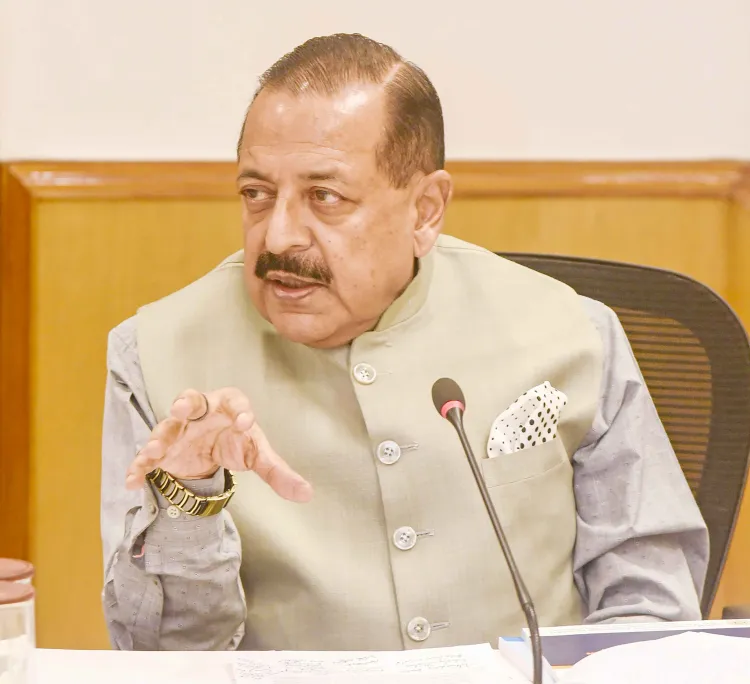
Synopsis
Key Takeaways
- India's MedTech sector projected to reach $50 billion by 2030.
- SCTIMST plays a pivotal role in innovation and production.
- Focus on affordable healthcare solutions is crucial.
- Public awareness and access to innovations need improvement.
- Integration of teaching, training, treatment, and trade is vital for growth.
New Delhi, Oct 3 (NationPress) The medical technology sector in India is currently valued at approximately $12 billion in 2025 and is witnessing a robust growth rate of nearly 20 percent annually. Projections indicate that this sector is on track to reach $50 billion by the year 2030, as stated by Dr. Jitendra Singh, the Minister of State (Independent Charge) for Science and Technology and Earth Sciences.
During the inauguration of a medical exhibition at the Chitra Tirunal Institute for Medical Sciences and Technology (SCTIMST) in Thiruvananthapuram, the minister emphasized that India is poised to become a global hub for affordable and high-quality healthcare.
Dr. Singh commended SCTIMST for its role in producing high-quality medical devices at competitive prices and urged for an increase in production and broader awareness of these local innovations.
He pointed out that SCTIMST’s efforts are in line with the Prime Minister’s vision of Atmanirbhar Bharat, which aims to reduce import dependence, Vishwabandhu Bharat by exporting critical devices like heart valves and MRI-compatible shunts, and Viksit Bharat 2047 through partnership with the private sector and revenue generation.
To illustrate SCTIMST’s impact, Dr. Singh shared that the institute has supplied heart valves to over 200,000 patients and provided advanced shunts to around 2,000 patients. Innovations such as the Hemostasis Patch have been vital in trauma and battlefield situations.
Despite these achievements, he noted that they are often underappreciated, even within leading hospitals, and called for increased production to enhance accessibility.
Dr. Singh expressed that while SCTIMST has created life-saving technologies, more efforts are needed to boost public awareness and usage.
He suggested showcasing the institute’s devices in prominent locations like Delhi, engaging civil society and stakeholders, to enhance the visibility of its advancements.
Furthermore, he highlighted that SCTIMST exemplifies a unique model in India by integrating the “Four Ts” — Teaching, Training, Treatment, and Trade — a concept prevalent in Western nations but relatively novel in India.
He concluded by stating that the institute has the potential to position India as a global center for affordable healthcare and medical tourism by 2047.


